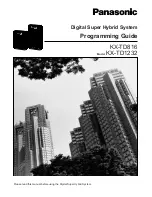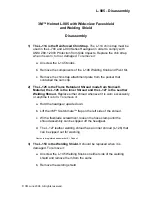
Subject to change without notice.
Edition: 26 Feb. 2020 Ver. A0 Page 2/6
It’s commonly known Microwave and Infrared are main detecting technologies in lighting controls. Both have the advantage and
disadvantage for industrial applications.
The remedy is to create Dual Sense by combining both technologies to make use of the advantage and bypass the disadvantage.
* HF: Microwave only
* PIR: PIR mode only
* HF+PIR: both PIR and microwave mode, to decrease the detection capability and detection
area. Only when both detections are activated, the motion is considered valid. This is
to prevent the sensor from false trigger by heat source, air conditioner, ventilation fans,
water pipe and elevators etc...
* HF/PIR: either PIR or microwave mode, to increase the detection capability and detection area;
* sensitive to minor motion.
* sensitive to radial movement.
* can be reflected by objects hence covering big detection area
* resilient to heat source, smoke and and air conditioner.
* penetrates walls, picks up motions outside of the office area;
* back wave detection, false trigger by motions at the back.
* can be false triggered by ventilation fans, water pipe, elevators
etc. in industrial application.
* no penetration, confined detection area.
* sensitive to tangential movement.
* resilient to motion object which has no heat radiation.
* can be false triggered by air conditioner, smoke and
other heat sources.
Dual Sense Introduction
HF
PIR
Advantage
Disadvantage
4 optional detection modes via DIP switch or remote control:
Disadvantage
Advantage
HF
PIR
HF+PIR
HF/PIR
1 2
I
II
III
IV
Photocell
Intelligent
Ambient daylight
threshold
One-Key
Commissioning
Rotary Switch
Programing
6
0
6
Detection Pattern
synchronization
control
TX
TX
TX
RX
Functions and Features
Intelligent Photocell (daylight detection prior to motion detection)
1
The built-in photocell will also automatically turn off the light when the ambient natural light exceeds the programmed lux level for
more than 5min, regardless of whether motion is detected or not. This feature can be disabled if it is required that the fixture stays at
dimmed level during absence.
With insufficient natural light, the sensor
switches on the light automatically when
presence is detected.
With sufficient natural light, the light
does not switch on when presence is
detected.
The sensor switches off the light when
natural light is sufficient, even with
presence.
Note: if the stand-by time is preset at "+∞", the fixture never switches off but stays at preset dimming level even when natural light is sufficient.
























